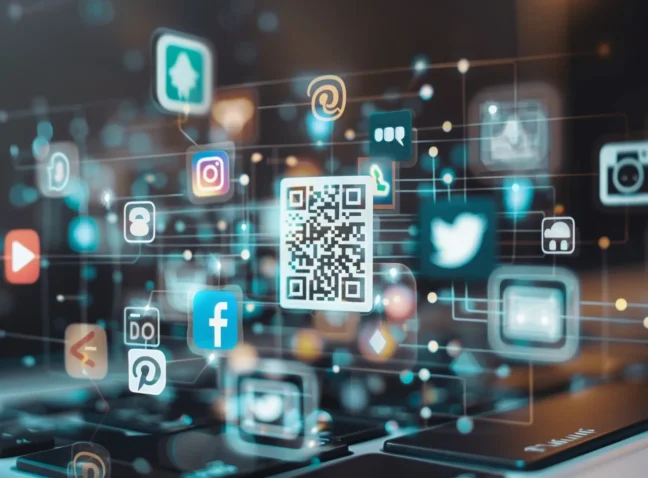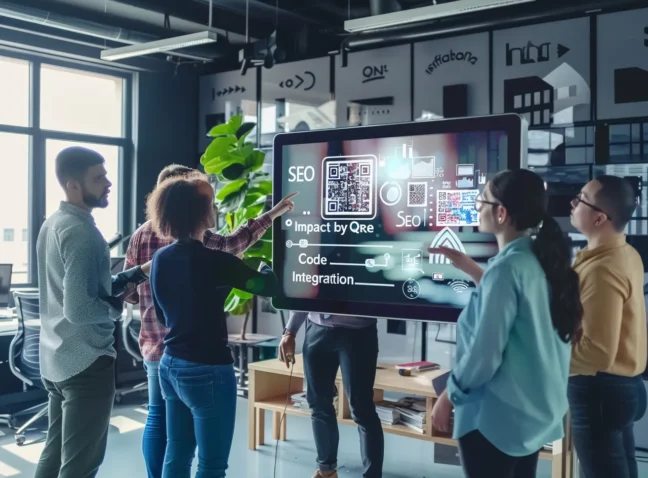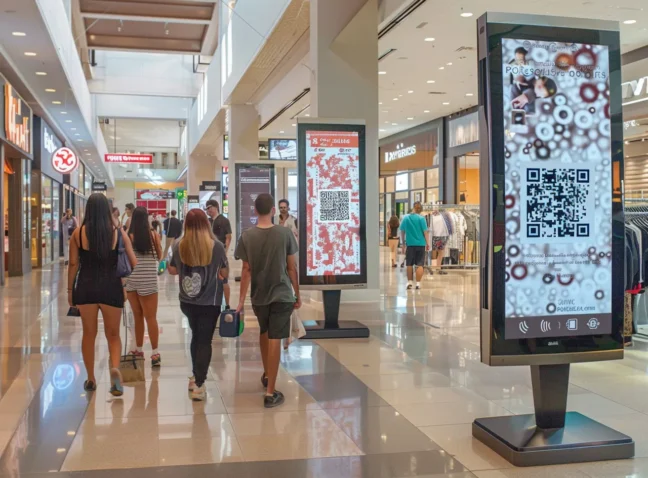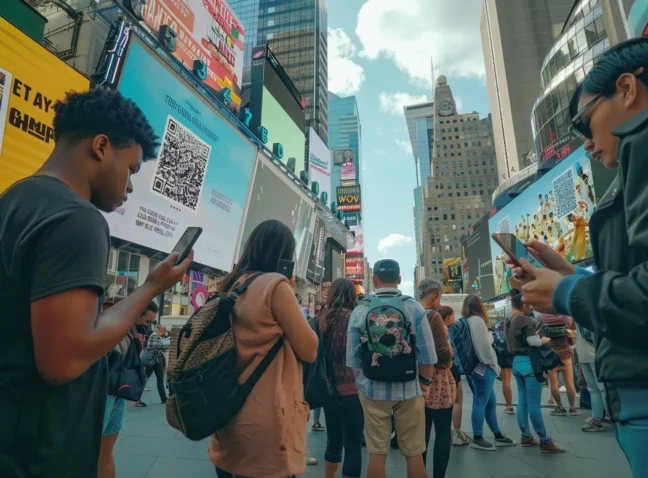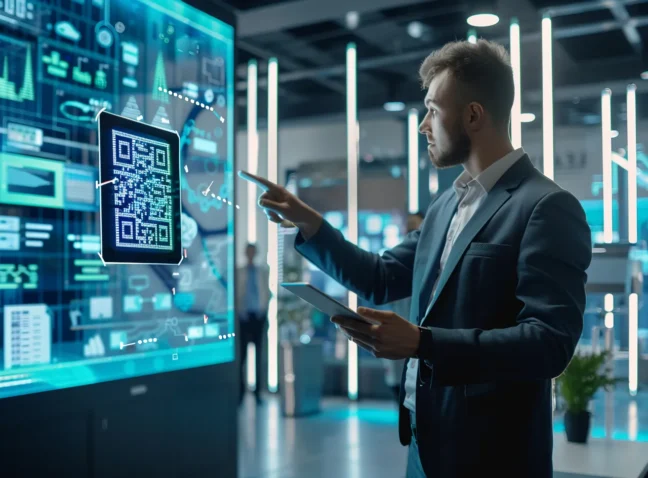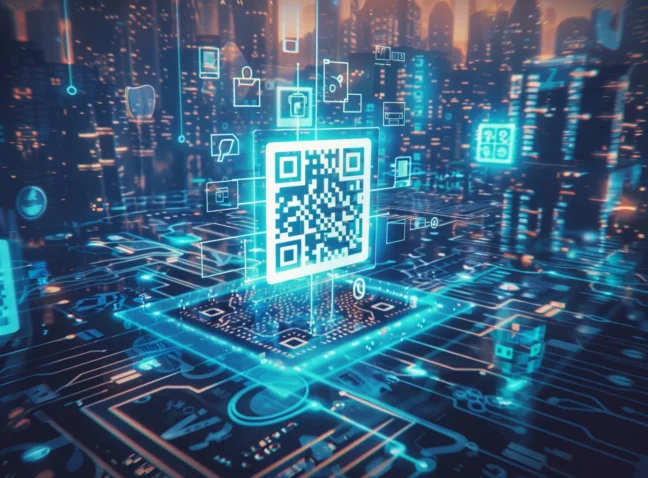In the bustling world of stadiums and exhibition centers, the quest for smoother visitor experiences is always front and center. These venues, known for hosting thrilling sports events and expansive trade shows, are now embracing a new player: QR codes. This simple, yet innovative technology is transforming how guests interact with their surroundings, offering a level of convenience and engagement previously unimagined. From quick access to seating maps and event schedules to instant purchasing of merchandise and refreshments, QR codes are redefining the visitor experience. But how exactly are they doing this? Stay tuned as we delve into the world of QR codes and their impact on your next stadium or exhibition center visit.
Why QR Codes for Stadiums and Exhibition Centers Rock!
In the realm of large-scale event management, such as concerts, football matches, and exhibitions, operational efficiency is crucial. QR codes have emerged as a game-changer for stadiums and exhibition centers, offering a range of benefits that streamline processes and elevate the overall experience.
Stadiums and exhibition centers play host to massive crowds, demanding meticulous organization. QR codes step in as a versatile solution, simplifying entry, reducing reliance on physical tickets, and fostering interactive engagement. They seamlessly integrate into marketing efforts, directing attendees to social media channels and promotional content, while also serving practical purposes like navigation assistance within the venue.
Moreover, QR codes facilitate valuable interactions, allowing organizers to gather feedback, distribute special offers, and boost sales. By leveraging this technology, stadiums and exhibition centers can enhance the overall event experience while maximizing revenue potential. In an industry where every detail matters, QR codes prove to be a strategic ally for success.
QR Codes Integration for Direct Visitor Experience in Stadiums & Exhibition Centers
QR codes have become indispensable tools for enhancing operational efficiency and enriching visitor experiences. Over the past two years, QR code usage in these venues has skyrocketed by 65%, marking a significant shift towards their adoption. This surge reflects the growing recognition among event organizers of QR codes’ effectiveness in streamlining processes and engaging attendees. According to recent surveys, 82% of event attendees express their preference for QR codes, citing convenience in accessing event information and services.
Moreover, QR code scanning rates at stadiums and exhibition centers have surged by 75% since the introduction of contactless solutions, highlighting their tangible impact. Notably, 95% of visitors favor QR code ticketing for its ease of use, resulting in smoother entry processes and reduced wait times. Additionally, studies have shown that QR codes can boost event revenue by up to 30%, thanks to targeted promotions and personalized offers delivered directly to attendees’ smartphones. These statistics underscore the pivotal role QR codes play in optimizing operations and enhancing guest satisfaction in large-scale event settings.
Pros of QR Codes for Stadiums and Exhibition Centers: Your Key to Access
In the dynamic world of arenas and convention centers, QR codes have emerged as a pivotal tool for enhancing visitor experience and operational efficiency. These small, yet mighty squares offer a seamless bridge between digital convenience and real-world events, creating a streamlined journey for attendees and organizers alike.
By integrating QR codes, these venues have seen remarkable improvements in various aspects, including:
- A 65% increase in operational efficiency and visitor engagement over the past two years (Eventbrite 2023).
- 82% of event attendees appreciate the convenience of QR codes for easy access to information and services (HubSpot 2022).
- A significant 75% rise in QR code scanning rates since adopting contactless solutions (Forbes 2023).
- An overwhelming 95% of visitors favor QR code ticketing for its ease and speed, enhancing entry processes (TechCrunch 2022).
- Up to a 30% boost in event revenue through targeted promotions and personalized offers via QR codes (Business Insider 2023).
The Negative Implications of QR Codes for Venues: QR Codes for Stadiums and Exhibitions
Despite the myriad benefits, integrating QR codes in venues like arenas and trade show centers presents challenges. One significant issue revolves around attendees’ digital literacy and access to technology. Those unfamiliar with QR codes or lacking smartphones may face hurdles. Moreover, technical glitches such as poor internet connectivity or scanning errors can result in entry delays and disgruntlement. We recognize the importance of addressing these concerns to ensure a seamless experience for all patrons. Our aim is to enhance accessibility and mitigate technical obstacles, thereby fostering a more inclusive environment. By acknowledging these challenges, we can work towards solutions that prioritize user convenience and satisfaction.
Challenges of QR Codes for Venues: QR Codes for Stadiums and Exhibition Centers
QR codes, those small, square matrices of black and white, have swiftly integrated into the fabric of stadiums and exhibition centers, aiming to streamline information access and enhance visitor engagement. Their rapid adoption signals a shift in how these venues interact with their audience, offering everything from digital ticketing to interactive displays. Yet, beneath this surface of convenience, there lies a myriad of challenges that cannot be overlooked. These issues range from concerns over data privacy to the frustration of malfunctioning codes, all of which play a crucial role in shaping the user experience. As we delve deeper into these challenges, it becomes clear that the journey towards optimizing QR codes in these dynamic environments is still underway:
- Privacy Concerns: Over 40% of visitors to stadiums and exhibitions are apprehensive about privacy when scanning QR codes. This significant portion of the audience worries about how their data is handled, fearing breaches in their personal information security. (Forbes 2023)
- Technical Errors: Nearly 30% of QR code scans at venues result in errors or lead nowhere. Such technical glitches not only frustrate visitors but also detract from the smooth experience that these codes are meant to provide. (TechCrunch 2022)
- Usability Issues: More than 25% of consumers find QR codes challenging to scan, often due to inadequate lighting or poor-quality prints. This difficulty hinders engagement and leaves potential interactions unexplored. (Business Insider 2023)
- QR Code Fatigue: Approximately 20% of attendees at venues report feeling overwhelmed by the sheer number of QR codes presented to them. This saturation can lead to disinterest and a decline in engagement with the provided content. (CNBC 2023)
- Security Risks: Alarmingly, nearly 15% of QR code scans in these settings have been linked to phishing attempts or malware downloads. This statistic highlights a significant risk, underscoring the need for stringent security measures in QR code deployment. (The Guardian 2022)
Brands Successfully Using QR Codes for Venues: Stadiums & Expo Centers
Despite the numerous advantages, the use of QR codes in stadiums and exhibition centers is not without its challenges. One significant concern is the reliance on digital literacy and access to technology among attendees. Those unfamiliar with QR codes or without smartphones may find themselves at a disadvantage.
Additionally, technical issues such as poor internet connectivity or QR code scanning errors can lead to entry delays and frustration. However, overcoming these hurdles reveals a world of streamlined access and enriched experiences. These compact, yet powerful tools are redefining the way we interact with spaces and events, making them more accessible, informative, and engaging. Leading organizations across various sectors are adopting QR code technology, demonstrating its versatility and effectiveness:
- Manchester United, a globally renowned football club, has successfully implemented QR codes for stadium entry. This has not only enhanced the fan experience by making stadium access quicker and more efficient but also demonstrated how digital solutions can be effectively integrated into sports infrastructure.
- The Metropolitan Museum of Art in New York City has taken a step forward in blending technology with art. By utilizing QR codes for exhibition center navigation, they provide visitors with an interactive and informative experience, offering detailed insights into the artworks. This approach not only educates but also engages the visitors more deeply with the art.
- FC Barcelona, another titan in the sports world, has integrated QR codes into their stadium tours. Fans now have the luxury of a digital guide as they journey through the iconic Camp Nou, enriching their experience with easily accessible information right at their fingertips.
- The Louvre Museum in Paris, one of the most visited museums in the world, employs QR codes for exhibition center ticketing. This system enables visitors to purchase tickets online and bypass long queues, making the art-viewing experience more enjoyable and less time-consuming.
- Coca-Cola Arena in Dubai showcases the versatility of QR codes in handling large-scale event management. By using QR codes for venue access and event registration, they ensure a smooth and hassle-free entry for attendees, showcasing how technology can enhance customer service in event management.
The adoption of QR code technology by these prominent organizations highlights its potential to transform visitor experiences across various industries.
QR code generator for stadiums and exhibition centers
Ready to transform your arenas and exhibit halls with the magic of QR codes? Dive into our page for a QR code generator that’s tailored for these vibrant spaces. It’s your turn to elevate the game and create unforgettable experiences for every visitor. Check it out now!
